 |
 RUSSIA
RUSSIA
On this pageCountry Profile Synopsis
Balakovo Nuclear Power Plant
Beloyarsk Nuclear Power Plant
Bilibino Nuclear Power Plant
Kalinin Nuclear Power Plant
Kola Nuclear Power Plant
Kursk Nuclear Power Plant
Leningrad Nuclear Power Plant
Novovoronezh Nuclear Power Plant
Smolensk Nuclear Power Plant
Russian International Nuclear Safety Center
Country Profile SynopsisSize: 6,592,850 square miles (nearly twice the size of the United States)
Electricity Production1: 771.9 billion kWh (1998)
|
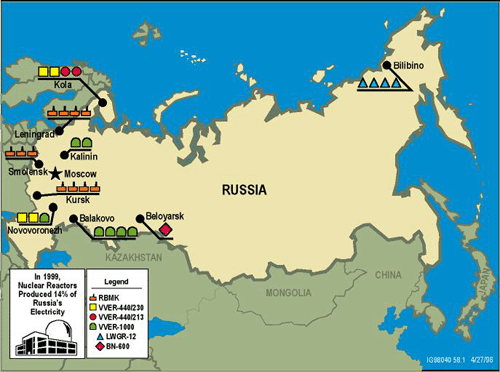
Russia's Nuclear Power Program
Russia has nine nuclear power plants with 29 reactors. In 1999, the nuclear power plants in Russia produced 14 percent of the electricity; in the far western parts of Russia, the share was higher, near 30 percent. The Kola, Leningrad, and Smolensk nuclear power plants supply half of northwest Russia's electricity requirements.
About 97 percent of Russia's nuclear generating capacity comes from reactors built to the RBMK and VVER designs. DOE's cooperative safety program works closely with several Russian organizations.
Russia's Key Nuclear Organizations
- Ministry of Atomic Energy of the Russian Federation (Minatom) - agency responsible
for fuel cycle and nuclear energy production activities, nuclear scien-
tific and research centers, and nuclear weapons complex. Also responsible for operation of the Leningrad nuclear power plant.
- Rosenergoatom (REA) - a business concern of Minatom responsible for all nuclear power plant operations except the Leningrad nuclear power plant.
- Russian Institute for Nuclear Power Plant Operations (VNIIAES) - organization that assists in nuclear power plant startup, operations, and training; manufactures full-scope and analytical simulators.
- Research and Development Institute of Power Engineering (RDIPE) - also known as NIKIET or ENTEK; main designer of RBMK reactors.
- Atomenergoproekt - VVER and RBMK nuclear facility architect/engineer responsible for the balance of plant design (non-nuclear portion of plant).
- Gosatomnadzor (GAN) - organization responsible for regulating the safety of nuclear reactors and fuel cycle enterprises.
- Russian Academy of Sciences- Nuclear Safety Institute (IBRAE, Moscow) - independent organization specializing in the development of nuclear safety computer analysis methods.
- Russian Scientific Center - Kurchatov Institute - organization responsible for designing power reactors, research reactors, fuel, fuel cycle facilities, space nuclear reactors; conducts economic and policy studies, metallurgical research, fusion research.
- Gidropress - Experimental Design Institute - organization responsible for VVER reactor design, steam generator design and manufacturing, and thermal-hydraulic code development and testing.
Balakovo Nuclear Power Plant

Plant Manager: Pavel L. Ipatov
Chief Engineer: Victor I. Ignatov
Utility: Rosenergoatom
Telephone No.: 7-845-70-32638
Fax: 7-845-70-26209
| Unit | Reactor Model | Net Output | Initial Start | Status |
|---|---|---|---|---|
| 1 | VVER-1000 | 950 MWe | 12/1985 | Operating |
| 2 | VVER-1000 | 950 MWe | 10/1987 | Operating |
| 3 | VVER-1000 | 950 MWe | 12/1988 | Operating |
| 4 | VVER-1000 | 950 MWe | 3/1993 | Operating |
| 5 | VVER-1000 | 950 MWe | Construction Suspended | |
| 6 | VVER-1000 | 950 MWe | Construction Suspended | |
Scope and Status of Activities
Operator training is a key factor in improving safety of day-to-day operations. At the Balakovo plant, a major DOE effort has been to establish the Balakovo Training Center, a fully equipped training facility at which reactor operators from other Russian reactors have been trained in the Systematic Approach to Training methodology (1993-1998). Center specialists have developed job-specific and general safety-related courses for use at the center and at other Russian reactors (1994-1998). Other major projects are focused on developing improved operating procedures and practices (1994-1997) and providing an analytical simulator and upgrading a full-scope simulator to enhance effectiveness of training (1996-1999). Projects to upgrade safety systems and to transfer the capabilities for performing in?depth safety assessments are under way.
Accomplishments
Management and Operational Safety- All 48 emergency operating instructions that promote safety through improved accident mitigation strategies were developed. Analysis necessary to support implementation of these procedures is under way.
- All 15 guidelines for preparing management and operational control procedures that promote safety through improved operating practices were developed and implemented at the plant.
- Operator exchanges that trained plant personnel to develop improved operating safety procedures and practices were completed.
- The Balakovo Unit 4 VVER-1000 full-scope simulator has been upgraded with new computer hardware, significant system modification, and a remote shutdown control panel.
- An analytical simulator was developed for Unit 4.
- A fully equipped nuclear power plant training center was established at the plant; through 1997, more than 1,600 personnel had attended classes at the training center.
- Basic training equipment was provided for the Balakovo Training Center. This equipment included scanners, photocopiers, printers, faxes, personal computers, office furniture, whiteboards, overhead projectors, projector screens, and various consumables and office supplies.
- A full slate of 12 job-specific maintenance and operations courses, as well as six courses in general topics related to nuclear safety, were developed and conducted at the Balakovo plant.
- Equipment to complement the 12 job-specific maintenance and operations training
courses was provided to the Balakovo plant. This equipment included laser-alignment
equipment, motor-current test units, electronics training equipment, soldering
stations, a reactor head mockup, chemical laboratory equipment, radia-
tion measurement equipment, flange bolt torquing demonstration equipment, and audio/video equipment.
- Support was provided to design and construct an emergency diesel generator training laboratory for instrument and control operator and electrical operator training.
- The transfer of training technology and materials developed at the Balakovo Training Center to other nuclear power plants and training centers in Russia was completed.
Beloyarsk Nuclear Power Plant
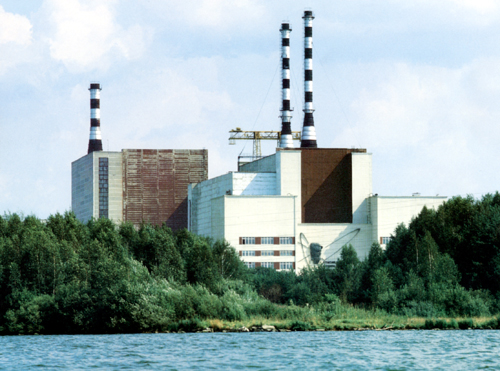
Plant Manager: Oleg M. Saraev
Chief Engineer: Nikolai N. Oshkanov
Utility: Rosenergoatom
Telephone No.: 7-343-77-36350
Fax: 7-343-77-31070
| Unit | Reactor Model |
Net Output | Initial Start | Status |
|---|---|---|---|---|
| 1 | LWGR- 1000 |
102 MWe | 4/1964 | Shut Down 6/1983 |
| 2 | LWGR- 1000 |
146 MWe | 12/1969 | Shut Down 1/1990 |
| 3 | BN-600 | 560 MWe | 11/1981 | Operating |
| 4 | BN-800 | 750 MWe | Construction Suspended | |
Scope and Status of Activities
At Beloyarsk nuclear power plant, DOE projects have focused on improving the training of plant managers and operators (1996-1998).
Accomplishments
Management and Operational Safety- The transfer of the Systematic Approach to Training methodology and training materials developed at the Balakovo Training Center was completed. A pilot course on sodium pump repair was implemented with assistance from U.S. and Balakovo nuclear power plant training specialists.
- Basic training equipment was provided for the development and support of training materials at the plant. This equipment included computers, software, printers, a photocopier, office furniture, binding machines, whiteboards, overhead projectors, projector screens, and various consumables and office supplies.
- Instructors from the plant were trained in the Systematic Approach to Training methodology and in instructor skills.
Bilibino Nuclear Power Plant
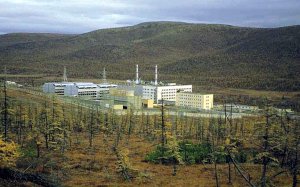
Plant Manager: Mikhail V. Chudakov
Chief Engineer: Andrey A. Dementjev
Utility: Rosenergoatom
Telephone No.: 7-413-62-24448
Fax: 7-413-62-24888
| Unit | Reactor Model |
Net Output |
Initial Start |
Status |
|---|---|---|---|---|
| 1 | LWGR | 12 MWe | 12/1973 | Operating |
| 2 | LWGR | 12 MWe | 12/1973 | Operating |
| 3 | LWGR | 12 MWe | 12/1975 | Operating |
| 4 | LWGR | 12 MWe | 12/1976 | Operating |
Scope and Status of Activities
DOE is supporting efforts to improve the safety of day-to-day operations at the Bilibino plant. DOE projects have been focused primarily on improving training for plant staff (1996-1998); providing an analytical simulator to enhance training effectiveness (1997-2000); providing safety maintenance equipment and technology (1997-2000); and establishing improved communication links with Moscow and with the Alaskan Emergency Response Office (1996).
Accomplishments
Management and Operational Safety- An analytical simulator project was initiated for the plant; the simulator was completed and turned over to the plant in May 2000.
- As part of transferring the Systematic Approach to Training methodology and training materials developed at the Balakovo Training Center to the Bilibino plant, pilot courses for Shift Supervisors and Instrument and Control Technicians were implemented.
- Instructors from the plant were trained in the Systematic Approach to Training methodology and in instructor skills.
- Plant engineers attended a corrosion workshop in Alaska that focused on the unique aspects of corrosion in cold weather environments.
- The first phase of developing a maintenance training classroom for Bilibino was completed. Additional materials were provided to complete the room renovation.
- Maintenance training classes on reactor protective circuit boards were completed.
- The unit Shift Supervisor and Instrument and Control Technician pilot courses were implemented at the plant.
- U.S. and Russian training specialists worked with Bilibino instructors to develop a training course on testing and repairing circuit boards.
- Three Immarsat satellite phones, with 500 minutes of pre-paid calling time, were purchased and delivered to REA and the plant.
- One instructor preparation room and one classroom at the plant were refurbished and equipped with personal computers, a server, printers, copy machines, and a training TV and VCR.
Plant Safety Evaluations
- Training was provided to a plant engineer in using the SCALE computer code package (a suite of criticality, neutronics and heat-transfer codes used by the nuclear industry to support licensing submittals). The engineer was also given preliminary indoctrination in the use of MCNP (codes for criticality and shielding calculations) and Visual Editor, which provides visual display of results.
Kalinin Nuclear Power Plant
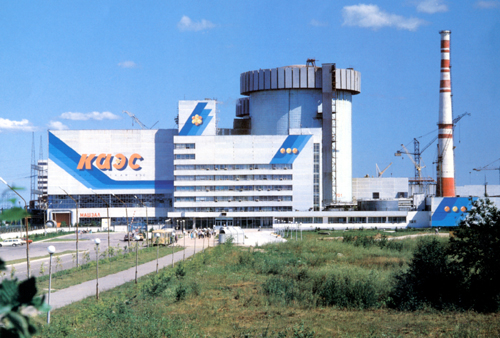
Plant Manager: Stanislav I. Antipov
Chief Engineer: Vasily I. Aksenov
Utility: Rosenergoatom
Telephone No.: 7-082-55-44742
Fax: 7-082-55-44591
| Unit | Reactor Model |
Net Output |
Initial Start |
Status |
|---|---|---|---|---|
| 1 | VVER- 1000 |
950 MWe | 4/1984 | Operating |
| 2 | VVER- 1000 |
950 MWe | 11/1986 | Operating |
| 3 | VVER- 1000 |
950 MWe | Under Construction | |
| 4 | VVER- 1000 |
950 MWe | Construction Suspended | |
Scope and Status of Activities
DOE's efforts focus primarily on improving the safety of day-to-day operations at the Kalinin plant. Projects include improving the training of plant management and staff (1994-1998) and providing a full-scope simulator to enhance effectiveness of training (1995-2001).
Accomplishments
Management and Operational Safety- Key computer and input/output system components for the Kalinin VVER-1000 full-scope simulator were delivered. The control panels have been wired and are being assembled at VNIIAES in Moscow. The simulator is scheduled to be completed in November 2001.
- Operator exchanges that trained plant personnel to develop improved operating safety procedures and practices were completed.
- As part of the transfer of the Systematic Approach to Training methodology and training materials developed at the Balakovo Training Center to the Kalinin plant, a pilot course on laser shaft alignment was developed and implemented. Instructors from the plant were trained in the Systematic Approach to Training methodology and in instructor skills.
- Design, development, and implementation of the training courses in mechanical maintenance and rotating equipment alignment were completed.
- Course-specific laser shaft-alignment equipment was provided and integrated into the laser shaft-alignment training course.
- A workshop on certification of full-scope simulators for nuclear power plants was conducted for the Kalinin staff.
- The mechanical maintenance motor-operated valve course was transferred to Kalinin.
Kola Nuclear Power Plant

Plant Manager: Yuri V. Kolomtsev
Chief Engineer: Vasily V. Omelchuk
Utility: Rosenergoatom
Telephone No.: 7-815-32-68350
Fax: 7-815-32-68140
| Unit | Reactor Model |
Net Output |
Initial Start |
Status |
|---|---|---|---|---|
| 1 | VVER- 440/230 |
411 MWe | 6/1973 | Operating |
| 2 | VVER- 440/230 |
411 MWe | 11/1974 | Operating |
| 3 | VVER- 440/213 |
411 MWe | 2/1981 | Operating |
| 4 | VVER- 440/213 |
411 MWe | 10/1984 | Operating |
Scope and Status of Activities
DOE efforts at the Kola plant are directed primarily toward improving the safety of day-to-day operations and upgrading critical plant safety systems. Projects focus on developing emergency operating instructions (1993-2001), upgrading the confinement system (1993-1997), and improving other engineered safety systems (1993-1998). Projects also are in place to perform safety assessments and to transfer capabilities for performing plant safety analyses (1996-2001) and to provide a full-scope simulator to enhance staff training (1995-2000).
Accomplishments
Management and Operational Safety- A VVER-440/213 full-scope simulator was completed in March 2000 for Kola Unit 4.
- Operator exchanges that trained plant personnel to develop improved operating safety procedures and practices were completed.
- A full set of emergency operating instructions that promote safety through improved accident mitigation strategies was developed. Analysis necessary to support implementation of these procedures is under way.
- As part of the transfer of the Systematic Approach to Training methodology and training materials developed at the Balakovo Training Center to the Kola plant, a pilot course on laser shaft alignment was developed and implemented.
- Design, development, and implementation of the training courses in mechanical maintenance and rotating equipment alignment were completed.
- Course-specific laser shaft-alignment equipment was provided and integrated into the laser shaft-alignment training course.
- Instructors from the plant were trained in the Systematic Approach to Training methodology and in instructor skills.
- The mechanical maintenance motor operated valve course was transferred to Kola.
- Nondestructive examination equipment and associated training were provided to Kola personnel in 1999.
Engineering and Technology Upgrades
- Confinement isolation valves, which limit the spread of radioactive materials in the event of an accident, were installed at Unit 2.
- A project to substantially reduce leaks in the Unit 2 confinement system was completed. Confinement leakage paths were sealed, and post-accident confinement radiation monitors were installed at Unit 2.
- Seismically qualified, direct-current power supply systems (including batteries) were installed at Units 1 and 2.
Plant Safety Evaluations
- A Level 1 internal events probabilistic risk assessment was completed for Unit 4. A peer review of the results was completed by the Swedish International project.
- A design basis accident analysis for Units 1 and 2 is nearing completion.
- A Level 1 internal events probabilistic risk assessment for Unit 2 was begun with joint support from DOE and the Swedish International project. Technical guidelines, most of the fault trees, and most of the data tasks are complete.
- The technology transfer activities under the auspices of the plant safety
evaluation program have provided the staff of the Kola plant with a high degree
of expertise in probabilistic risk assessment analysis.
Kursk Nuclear Power Plant
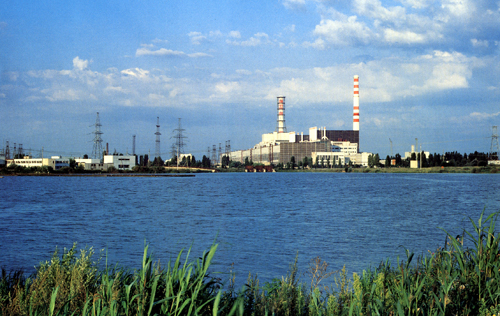
Plant Manager: Yuriy I. Slepokon
Chief Engineer: Vyacheslav M. Rjakhin
Utility: Rosenergoatom
Telephone No.: 7-071-31-41819, -53350, -41839
Fax: 7-071-31-41849, -54329
| Unit | Reactor Model |
Net Output |
Initial Start |
Status |
|---|---|---|---|---|
| 1 | RBMK- 1000 |
925 MWe | 10/1976 | Operating * |
| 2 | RBWK- 1000 |
925 MWe | 12/1978 | Operating |
| 3 | RBWK- 1000 |
925 MWe | 8/1983 | Operating |
| 4 | RBMK- 1000 |
925 MWe | 10/1985 | Operating |
| 5 | RBMK- 1000 |
925 MWe | Under Construction | |
| * Operating under a "trial period." | ||||
Scope and Status of Activities
DOE efforts at the Kursk plant focus on improving the safety of day-to-day operations and upgrading critical plant safety systems. Projects include providing tools, equipment, and training to improve plant safety maintenance (1995-1999) and upgrading key engineered safety systems (1993-2000).
Accomplishments
Management and Operational Safety-
Operator exchanges that trained plant personnel to develop improved operating safety procedures and practices were completed.
-
Emergency operating instructions that promote safety through improved accident mitigation strategies were developed for the plant. Analysis to support the implementation of these procedures is under way.
-
Mechanical pump/motor shaft alignment equipment was provided to the plant along with training by U.S. specialists.
-
State-of-the-art machines to cut pipes in vital safety systems precisely and prepare pipe ends for welding were provided to the plant. Previously, workers cut pipes needing replacement by hand, which caused inaccurate welds and potential leakage.
-
Valve-seat resurfacing equipment and a vibration monitoring and shaft alignment system for improving safety maintenance activities were provided to the plant
-
Basic equipment was provided for the development and support of training materials at the plant. This equipment included computers and a server, software, printers, a photocopier, overhead projectors, projector screens, and various consumables and office supplies.
-
Instructors from the plant were trained in the Systematic Approach to Training methodology and in instructor skills.
-
The transfer of the Systematic Approach to Training methodology and training materials developed at the Balakovo Training Center to the Kursk plant was completed. A pilot course on laser shaft alignment was developed and implemented.
Engineering and Technology Upgrades
-
A seismically qualified, direct-current power supply system (including batteries) was installed at the plant.
-
A safety parameter display system was installed and tested at Unit 2.
-
Automated ultrasonic test equipment for detecting flaws in piping and other pressure boundary components was delivered to the plant. Associated training was provided.
-
Prototypes of high-temperature protective clothing for inspecting steam leaks were provided for the plant. (High-temperature protective clothing was subsequently provided to each of the nuclear power plants operated by Rosenergoatom.)
- An emergency water supply system was installed and tested.
Plant Safety Evaluations
- Computer systems and office equipment were supplied to the plant for the onsite project management support for the Kursk in-depth safety assessment. Russian specialists are continuing efforts to complete the safety assessment on their own.
Leningrad Nuclear Power Plant
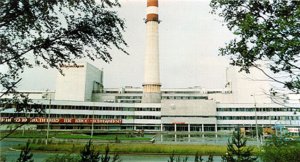
Plant Manager: Valery Lebedev
Chief Engineer: Yury V. Garusov
Utility: Leningrad Nuclear Power Plant
Telephone No.: 7-812-69-61397
Fax: 7-812-69-62518
| Unit | Reactor Model |
Net Output |
Initial Start |
Status |
|---|---|---|---|---|
| 1 | RBMK- 1000 |
925 MWe | 9/1973 | Operating |
| 2 | RBMK- 1000 |
925 MWe | 5/1975 | Operating |
| 3 | RBMK- 1000 |
925 MWe | 9/1979 | Operating |
| 4 | RBMK- 1000 |
925 MWe | 12/1980 | Operating |
Scope and Status of Activities
DOE efforts at the Leningrad plant focus on improving the safety of day-to-day operations and upgrading critical plant safety systems. DOE projects are in place for developing emergency operating instructions (1993-2001), providing modern safety maintenance tools and techniques (1995-1999), and performing in-depth safety assessments (1996-2002). In addition, projects are under way to provide an improved fire detection system (1995-2000).
Accomplishments
Management and Operational Safety-
Operator exchanges that trained plant personnel to develop improved operating safety procedures and practices were completed.
-
Emergency operating instructions that promote safety through improved accident mitigation strategies for the plant were developed. Analysis necessary to support the implementation of these procedures is under way.
-
Valve-seat resurfacing equipment, a pipe lathe/weld-preparation machine, and a vibration monitoring and shaft alignment system for improving safety maintenance activities were provided to the plant.
-
Basic equipment was provided for the development and support of training at the plant. This equipment included computers, printers, a scanner, photocopiers, overhead projectors, projector screens, video equipment, and various consumables and office supplies.
-
The transfer of the Systematic Approach to Training methodology and training materials developed at the Balakovo Training Center to the Leningrad plant was completed. Pilot courses for Shift Supervisors and Control Room Reactor Operators were developed and implemented.
- Instructors from the plant have been trained in the Systematic Approach to Training methodology and in instructor skills.
Engineering and Technology Upgrades
- New fire-detection and alarm systems were installed in Units 1 and 2.
Plant Safety Evaluations
-
The plant has staffed a safety analysis group to support the probabilistic safety assessment and full-scope in?depth safety assessment (ISA). The plant is taking the lead in identifying the scope and content of the ISA.
-
Project planning to expand the plant's Unit 2 safety assessment to a full-scope in-depth safety assessment necessary to meet Russian regulatory requirements was completed. An in-depth safety assessment for Unit 2 was initiated. In support of the assessment, system descriptions and a safety analysis were completed. Plant-specific reliability and operational data are being collected. Quantification of an internal-event probabilistic risk assessment was completed.
Novovoronezh Nuclear Power Plant
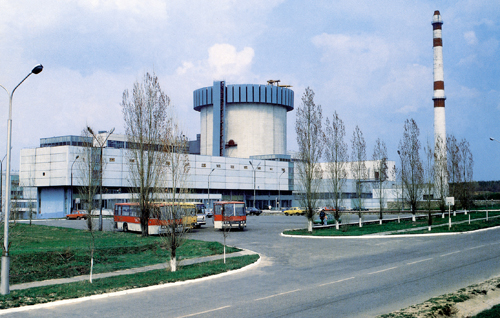
| Unit | Reactor Model |
Net Output |
Initial Start |
Status |
|---|---|---|---|---|
| 1 | VVER- 210 |
265 MWe | 12/1964 | Shut Down 2/1988 |
| 2 | VVER- 365 |
336 MWe | 4/1970 | Shut Down 8/1990 |
| 3 | VVER- 440/230 |
385 MWe | 12/1971 | Operating |
| 4 | VVER- 440/230 |
385 MWe | 12/1972 | Operating |
| 5 | VVER- 1000 |
950 MWe | 4/1980 | Operating |
Plant Manager: Vyacheslav A. Vikin
Chief Engineer: Vladimir S. Zarubaev
Utility: Rosenergoatom
Telephone No.: 7-073-64-73305
Fax: 7-073-64-73302
Scope and Status of Activities
DOE efforts at the Novovoronezh plant focus on improving the safety of day-to-day operations and upgrading critical plant safety systems. DOE projects include providing an analytical simulator to improve reactor operator training (1995-1998); developing and implementing emergency operating instructions (1993-1997); and performing in-depth safety assessments (1996-2001). Other projects include improving key plant safety systems (1994-2001) and providing safety parameter display systems (1994-2002).
Accomplishments
Management and Operational Safety-
Operator exchanges that trained plant personnel to develop improved operating safety procedures and practices were completed.
-
All twenty-nine symptom-based emergency operating instructions that promote safety at the plant through improved accident mitigation strategies were approved and implemented at Unit 3.
-
The Unit 3 VVER-440/230 analytical simulator project was completed and the simulator was declared operational in 1998.
-
Basic equipment was provided for the development and support of training at the plant. This equipment included personal computers, office furniture, overhead projectors, projector screens, and whiteboards.
-
The transfer of the Systematic Approach to Training methodology and training materials developed at the Balakovo Training Center to the Novovoronezh plant was completed. A pilot course for Shift Supervisors was developed and implemented.
-
Instructors have been trained in the Systematic Approach to Training methodology and in instructor skills.
- Configuration management databases for Document Control and Commitment Tracking were developed by the U.S. contractor and provided to the plant.
Engineering and Technology Upgrades
-
Safety parameter display systems were provided for Units 3 and 4.
- A mobile emergency water supply system was tested and delivered to the plant. Piping connections were installed to allow the system to provide emergency water makeup to the Unit 3 and 4 steam generators.
Plant Safety Evaluations
-
A Level 1 internal events probabilistic risk assessment for Unit 3 was completed. A walkdown and screening analysis for external events analysis was completed.
-
A RELAP model of Unit 3 and technical guidelines were completed for a design basis accident analysis.
- A format and content guide was prepared to assist the plant in developing its in-depth safety assessment report.
Smolensk Nuclear Power Plant
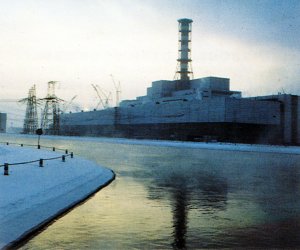
Plant Manager: Sergey P. Krylov
Chief Engineer: Akhmed Fereev
Utility: Rosenergoatom
Telephone No.: 7-081-53-72350
Fax: 7-095-59-25241
| Unit | Reactor Model |
Net Output |
Initial Start |
Status |
|---|---|---|---|---|
| 1 | RBMK- 1000 |
925 MWe | 9/1982 | Operating |
| 2 | RBMK- 1000 |
925 MWe | 4/1985 | Operating |
| 3 | RBMK- 1000 |
925 MWe | 12/1989 | Operating |
Scope and Status of Activities
At Smolensk nuclear power plant, DOE efforts are directed toward improving safety of day-to-day operations and improving critical plant safety systems. Projects include developing emergency operating instructions (1994-2001); providing improved maintenance tools, equipment, and techniques (1995-1999); and improving fire prevention and detection systems (1993-2002).
Accomplishments
Management and Operational Safety-
Operator exchanges that trained plant personnel to develop improved operating safety procedures and practices were completed.
-
Emergency operating instructions that promote safety through improved accident mitigation strategies were developed. Analysis necessary to support the implementation of these procedures is under way.
-
Valve-seat resurfacing equipment, a pipe lathe/weld-preparation machine, and a vibration monitoring and shaft alignment system for improving safety maintenance activities were provided to the plant.
-
The transfer of the Systematic Approach to Training methodology and training materials developed at the Balakovo Training Center to the Smolensk plant was completed. Pilot courses on laser shaft alignment, shift supervisor responsibilities, and control room reactor operations were developed and implemented.
-
Basic equipment was provided for the development and support of training at the plant. This equipment included computers, printers, software, a scanner, overhead projectors, and various consumables and office supplies.
- Instructors from the plant and the training center have been trained in the Systematic Approach to Training methodology and in instructor skills.
Engineering and Technology Upgrades
-
A deterministic fire hazards safe shutdown study was completed for Unit 3. Vulnerabilities identified in the analysis will be prioritized for remediation based on risk significance.
-
Fire doors, fire detectors, fire protection equipment, penetration sealant material, and a fire brigade radio system were provided to the plant to improve fire protection. Installation of the fire detection system is scheduled to be completed in 2000.
-
Eighty low-current, 400-V circuit-breakers were installed in the plant for in-plant demonstration. Nineteen 6-kV circuit-breaker assemblies were tested and certified. These assemblies were provided for in-plant testing in 2000. Testing was also performed on high-current 400-V circuit-breaker assemblies.
Russian International Nuclear Safety Center
Organization
The Russia International Nuclear Safety Center (RINSC) was founded in accordance with a joint Declaration on Establishing International Nuclear Safety Centers, adopted in January 1996, during the Sixth Session of the Gore-Chernomyrdin Commission on economical and technological cooperation in Washington, D.C. The Russian Minister for Atomic Energy has made the Russian Center accountable to the Department of Nuclear Power for its technical activities and to the Department of International Relations for its international cooperation. The Coordinating Council of the Center, which includes the leaders of the project member companies, is chaired by the Minister of Atomic Energy. The Center's Director is the Scientific Secretary of the Council. The selection of projects and their results are reviewed and evaluated by the Coordinating Council.
The RINSC is under the general direction of the Russian Minister for Atomic Energy. Professor Doctor Sergei E. Bougenko (Phone Number: 7-095-263-7310; Fax Number: 7-095-264-4010) is the Technical Director of the Center.
Activities
The RINSC carries out research and development studies to ensure the safety of nuclear power plants, research reactors, space, and maritime nuclear reactors. The leading agencies within Minatom, as well as nuclear-related companies, research centers and institutes, universities, and the Russian Academy of Sciences, participate in the Center's projects. Results of the Center's research and development efforts are subjected to independent peer review.
Historically, the United States and the Russian Federation both have had significant research programs on many of the topics that are vital to the safety of nuclear reactors. Unique capabilities and strengths have been developed in each country over the years. The leaders of the two countries have recognized the benefits of combining these strengths by engaging in collaborative research. This approach applies the best talents to the problems that must be addressed and it will maximize the benefits that can be derived from the available resources. The Russian International Nuclear Safety Center and the U.S. International Nuclear Safety Center collaborate on the nuclear safety projects listed below.
-
Development of Russian Nuclear Safety Database
-
Measurement and Review of Material Properties Data
-
Compilation of Information on Russian Nuclear Safety Research Facilities, Experiments, and Computer Codes
-
Development of Advanced Coupled Neutronic/Thermal Hydraulic/Mechanics Codes
-
Accident Management Technology Development for Russian Nuclear Power Plants
-
Validation of Russian Computer Codes for Transient Analysis of Design Basis Accidents
-
Validation of Three?Dimensional Structural Analysis Software and Models
-
Development of Techniques for Monitoring and Diagnostics of Sensors, Systems, and Equipment
-
Development of a Strategic Plan for Russian Nuclear Safety Research.
Five of the projects were initiated in January 1997; the other four projects were initiated in the middle of 1997. Some portions of these projects are being conducted in Russian laboratories and other portions are being conducted in United States laboratories.
One of the most significant accomplishment from the collaborative efforts between RINSC and USINSC has been the development of Safety Information Databases at the USINSC and at RINSC. They are accessible on the Internet at www.insc.anl.gov and www.insc.ru and they have received world-wide attention (8 million hits over the last two years).
| | Contents | Foreword | Program Overview | Armenia | Bulgaria | Czech Republic | Hungary | Kazakhstan | Lithuania | Russia | Slovakia | Ukraine | Appendix A | Appendix B | Appendix C | Contacts | |